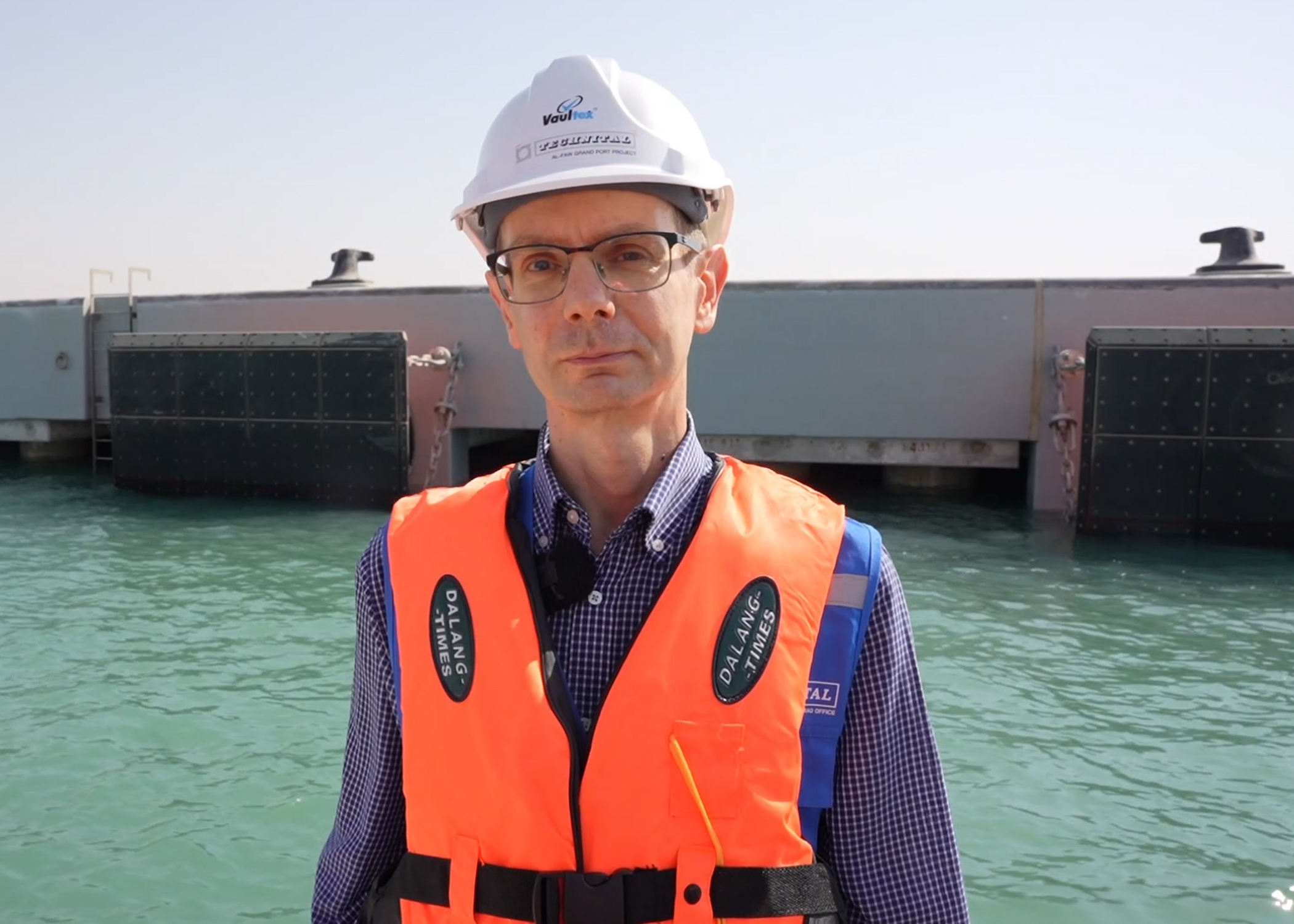Alberto Faedo, the Italian chief engineer at the consultancy firm Technital—which is supervising the design of Al Faw Grand Port, one of the most strategic projects implemented by the General Company for Ports of Iraq—has revealed previously undisclosed technical details about the port’s commercial berths, which now form a critical pillar in Iraq’s maritime infrastructure.
The Italian expert stated that “The design of the five berths at Al Faw Grand Port was developed with innovation and precision, taking into account the challenging geological conditions of the region, characterized by soft sandy soil that is highly sensitive to loads.”
He explained that “The foundational structures of the berths rely on a pile system made from high-strength steel, specifically engineered to withstand the immense weight of mega vessels and ensure long-term structural stability.”
Faedo noted that “The berths are equipped to accommodate vessels up to 400 meters in length and over 50 meters in width reflecting the port’s capability to host the latest generation of large container ships.” He added that “This operational depth grants the port a competitive regional edge in the maritime shipping and logistics sector.”
He also confirmed that “The berths have been outfitted with state-of-the-art marine handling systems, including container cranes with a 30-meter outreach, extending up to 35 meters beyond the quay, enabling access to all container slots on the vessel’s deck efficiently and accelerating loading and unloading operations.”
Regarding safety measures, the Italian expert pointed out that “The berths are equipped with robust marine fenders measuring 1.8 meters in width, which act as shock absorbers between the ship’s hull and the quay wall to reduce collision impact during berthing and departure operations, thereby safeguarding both structures.”
He continued, “Bollards have been installed along the berths at 50-meter intervals, each capable of withstanding a pull force of up to 2,000 kilonewtons, ensuring vessels remain securely moored even under severe weather and sea conditions.”
Faedo also highlighted that “The surface of the berths was engineered to withstand pressures up to 40 kilopascals, allowing two layers of containers to be stored directly on the quay, thereby enhancing handling efficiency without immediate transport to rear storage areas.”
He elaborated that “This structural pile-based berth design is also employed in the world’s largest ports, such as Jebel Ali in the UAE, Rotterdam in the Netherlands, Salalah in Oman, as well as in major maritime ports across Portugal, Brazil, and other regions worldwide.”
He concluded his remarks by stating, “What is being built at Al Faw Grand Port matches the standards of modern global ports. We are not merely replicating an experience—we are crafting an Iraqi experience founded on robust international principles, which will provide the country with long-term strategic maritime capability.”
Al Faw Grand Port project is considered one of Iraq’s most significant economic and developmental undertakings. It is expected to transform Iraq’s geographic location into a key connector for global trade between East and West, thanks to its deep water access and advanced infrastructure.

